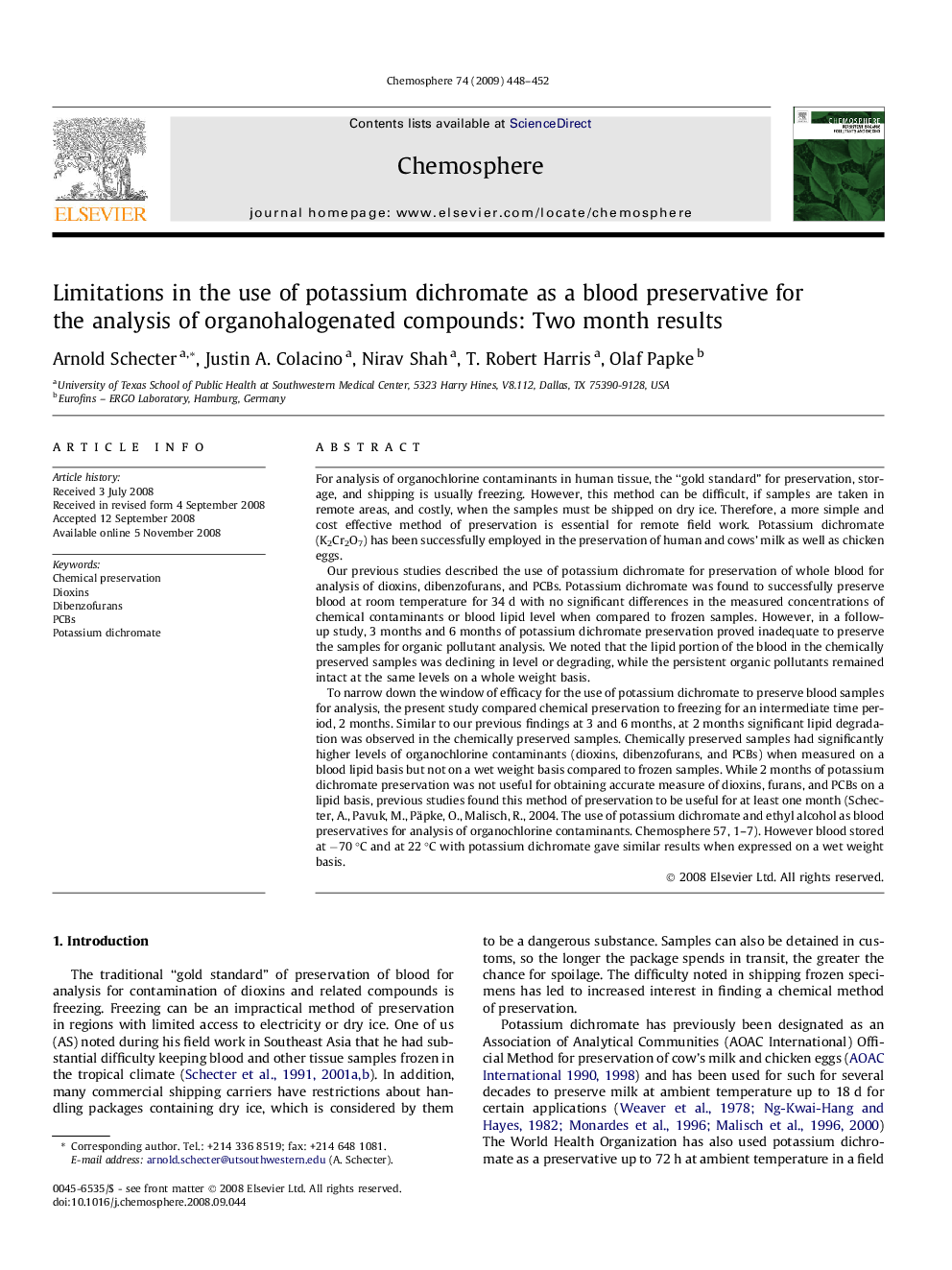| کد مقاله | کد نشریه | سال انتشار | مقاله انگلیسی | نسخه تمام متن |
|---|---|---|---|---|
| 4413660 | 1307685 | 2009 | 5 صفحه PDF | دانلود رایگان |

For analysis of organochlorine contaminants in human tissue, the “gold standard” for preservation, storage, and shipping is usually freezing. However, this method can be difficult, if samples are taken in remote areas, and costly, when the samples must be shipped on dry ice. Therefore, a more simple and cost effective method of preservation is essential for remote field work. Potassium dichromate (K2Cr2O7) has been successfully employed in the preservation of human and cows’ milk as well as chicken eggs.Our previous studies described the use of potassium dichromate for preservation of whole blood for analysis of dioxins, dibenzofurans, and PCBs. Potassium dichromate was found to successfully preserve blood at room temperature for 34 d with no significant differences in the measured concentrations of chemical contaminants or blood lipid level when compared to frozen samples. However, in a follow-up study, 3 months and 6 months of potassium dichromate preservation proved inadequate to preserve the samples for organic pollutant analysis. We noted that the lipid portion of the blood in the chemically preserved samples was declining in level or degrading, while the persistent organic pollutants remained intact at the same levels on a whole weight basis.To narrow down the window of efficacy for the use of potassium dichromate to preserve blood samples for analysis, the present study compared chemical preservation to freezing for an intermediate time period, 2 months. Similar to our previous findings at 3 and 6 months, at 2 months significant lipid degradation was observed in the chemically preserved samples. Chemically preserved samples had significantly higher levels of organochlorine contaminants (dioxins, dibenzofurans, and PCBs) when measured on a blood lipid basis but not on a wet weight basis compared to frozen samples. While 2 months of potassium dichromate preservation was not useful for obtaining accurate measure of dioxins, furans, and PCBs on a lipid basis, previous studies found this method of preservation to be useful for at least one month (Schecter, A., Pavuk, M., Päpke, O., Malisch, R., 2004. The use of potassium dichromate and ethyl alcohol as blood preservatives for analysis of organochlorine contaminants. Chemosphere 57, 1–7). However blood stored at −70 °C and at 22 °C with potassium dichromate gave similar results when expressed on a wet weight basis.
Journal: Chemosphere - Volume 74, Issue 3, January 2009, Pages 448–452